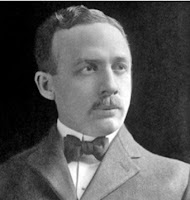And There's More Near Millsands
Around 20 years ago, the area to the west of Millsands was mainly warehouse businesses butt for
most of the 20th century it had been small industrial manufacturing companies, eg Dixons.
The first bit of development was the building of Sheffield's new Crown Court building (above aerial shot, bottom left). This stood on a road called West Bar which runs across the bottom of the above view.
Historically, this was narrow inner city clutter, boty residential and retail.
Of course by the mid 1900s auch property was long-since condemned and demolished and the opportunity was later taken to widen West Bat with two lanes in each direction.
Fashions and traffic management change over the years and the land on the right was further cleared for the aforementioned courts building.
But having widened the road, the later decision was taken to narrow it! It is now just one lane in each direction ...
... plus greenery. The reason that the road could be narrowed is the completion of the northern bit of Sheffield long-time-a-coming inner ring road (map below in
RED).
It was planning in 1945 and still isn't finished on the south east side of the city centre!
One other things changes and that is district names. Sheffield, for example, took the name of a former island in the River Don and gave it to a museum and later to a much expanded district.
Thus it is that the rough isosceles triangle of land between Corporation Street, Bridge Street and West Bar ...
... now has a district name (or maybe it might be a "quarter"?).
It is called - ahem - West Bar! We have already had a glimpse of the district in preparation when looking for today's Love Street ...
... but things have moved on since Streetview gingerly tootled down Bridge Street. This is a more recent view of the junction of Corporation Street and Bridge Street, i.e. the north of the development.
This is what those two blocks will look like; actually probably
do look like today!
Here is the full site plan:
... and here is what the block, now known as No 1 West Bar, (above the Crown Courts on the site plan) will look like.
But the good news is that the development will be all touchy-feely and cosy whilst saving the planet.
It announced that, wowsers, 1 West Bar will have a "green active ravel plan". That usually means "bike racks" nut it almost certainly
doesn't mean a well considered
bus travel plan.
The only bus stops serving this vast development are the aforementioned Millsands with the 83 bus TO city only and the SC2 from and to.
Outside the courts building there are frequent buses via Hillsborough outbound and inbound to the city and beyond.
Buses from both stops will get you to the main shopping areas and the railway station.
There are no buses on Corporation Street and we have already seen that the 83 is of use only into town with the outward route being significantly further away.
You would guess that most will have to walk unless something very different is created.
It is called "Planning For Public Transport NOT the Car"; and doesn't seem to have happened in this case.
Ideally there should be a turning circle for "something" bang in the middle at that "green" green space called West Bar Square.. You could easily run an upgraded SC2 into there.
There will need to be access there for all the bars and cafes that will be provided as part of the development.
Of course?
The Sheffield Connect 2 ...
... might then need bigger buses.
The mean green green machines are very nice, thank you, but inadequate for, say a lunch time rush from West Bar Square into the city centre to stock up with Prosecco and trendy nibbles!
14 seats?
No, 16 - there's and extra two with a splendid view of the panel behind the driver's seat.
Depressing Destructive NewsThe damage was to the driver's side front corner and some of the side paneling.
The debris was left at the site of a collision with another vehicle at about 0530 on Monday last.
A second vehicle was entered but not, apparently, driven away. Because of the damage and the police investigation, the SC1 frequency has been reduced from every 7/8 mins to every 10 with an apology from the South Pennine manager.
The SC2 to Millsands remain at every 20 minutes!
The new bridge allowing access to Millsands from Nursery Street did NOT replace the "Iron Bridge" as was illustrated yesterday
The original bridge can be seen at the junction of Corporations Street and Nursery Street as pictured below. It is, however still fenced off!
The old footbridge is upper left on the map below amidst the road junction ...
... the new bridge is lower right.
fbb punished himself by having only one choccy biccy instead of two with his afternoon cuppa yesterday - such sacrifice in the face of adversity!
Next Cobo Boco Loco blog : Friday 19th April





















































.jpg)













